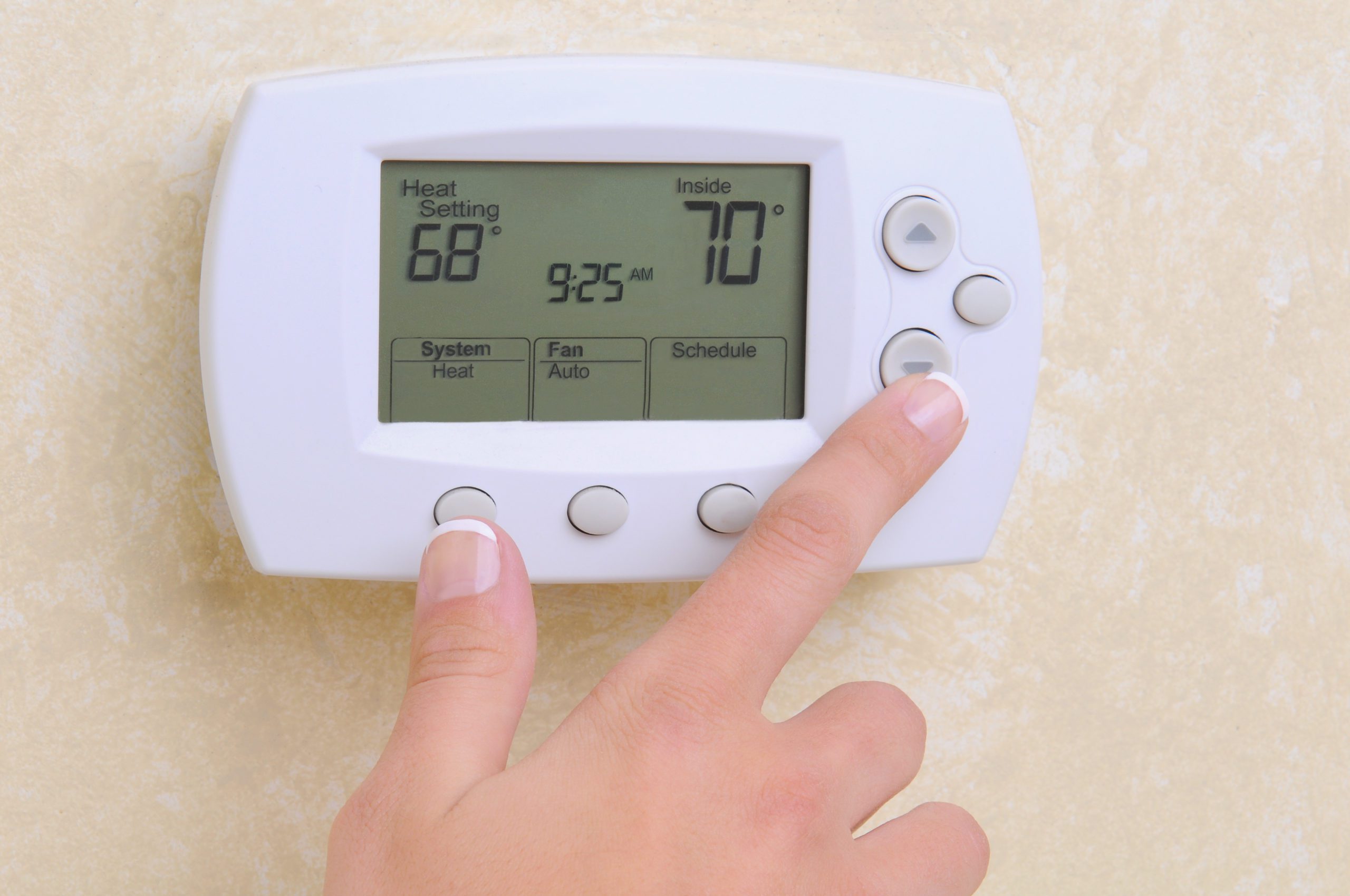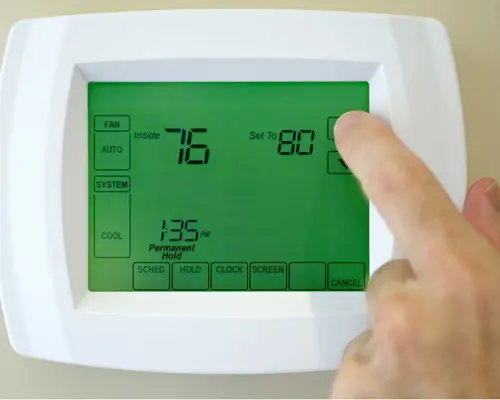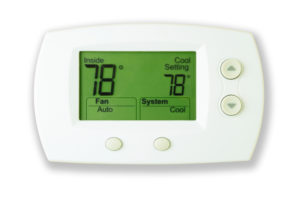Check Best Thermostat Pricing in Amazon
** As an Amazon Associate, I earn from qualifying purchases.
“Fan on” on a thermostat means the fan runs continuously. It operates regardless of heating or cooling cycles.
Many homeowners wonder about the “Fan on” setting on their thermostats. This feature can affect comfort, air quality, and energy use. Understanding what “Fan on” means helps you make better choices for your home’s climate control. In this blog post, we’ll explore the function and benefits of this setting.
We’ll also discuss when it might be useful and how it impacts your HVAC system. Ready to dive in? Let’s get started!
Introduction To Thermostat Fan Settings
When it comes to managing your home’s temperature, understanding your thermostat fan settings is crucial. These settings can significantly impact your comfort, energy usage, and even the lifespan of your HVAC system. So, what exactly does the “Fan” setting on a thermostat mean? Let’s dive in and uncover the details.
Purpose Of Fan Settings
The fan settings on your thermostat primarily control the blower fan in your HVAC system. This fan helps circulate air throughout your home. It can be set to “On” or “Auto”.
When set to “On”, the fan runs continuously. This can be beneficial for consistent air flow and reducing hot or cold spots in your home. However, it does use more electricity.
The “Auto” setting, on the other hand, means the fan only runs when the heating or cooling system is active. This can save energy and reduce wear on your system. But it may not circulate air as evenly.
Common Misconceptions
Some people think that leaving the fan on all the time will significantly increase their energy bills. While it does use more electricity, the increase is often not as high as you might expect. Plus, the benefits of even air distribution can outweigh the cost.
Another misconception is that the “Auto” setting is always better. While it saves energy, it can lead to uneven temperatures in larger homes. You may find some rooms are too hot or too cold.
Lastly, many believe that the fan setting has a major impact on air quality. In reality, while continuous circulation can help with air filtration, other factors like the quality of your air filters play a bigger role.
Understanding these settings can help you make informed decisions about your home’s comfort. Have you ever experimented with your thermostat’s fan settings? What was your experience?

Credit: catesheatingandcooling.com
How Thermostat Fan Works
Understanding how your thermostat fan works can save you money and keep your home comfortable. It’s not just about adjusting the temperature. Knowing the fan settings and how they operate can make a big difference. Let’s dive into the specifics of how your thermostat fan works.
Fan Modes
Most thermostats have at least two fan modes: ON and AUTO. Each mode serves a different purpose.
When the fan is set to ON, it runs continuously. This can help maintain a consistent air circulation throughout your home. It’s great for filtering air, but it can increase your energy bills.
Setting the fan to AUTO means it only runs when the heating or cooling system is active. This can save energy but may result in less consistent air distribution.
Operational Mechanics
The operational mechanics of your thermostat fan are straightforward but crucial. When you switch your fan to ON, the fan motor gets a constant supply of power. It keeps running regardless of whether the system is heating or cooling.
In the AUTO mode, the fan motor only receives power when the thermostat calls for heating or cooling. Once the desired temperature is reached, the fan turns off. This cycling can help reduce wear on your fan motor and save on electricity.
Have you ever noticed how some rooms feel warmer or cooler than others? The fan setting could be the culprit. Consider experimenting with different modes to see what works best for your home.
What’s your experience with thermostat fan settings? Have you found one mode more effective than the other?
Benefits Of Using Fan On Mode
The ‘Fan On’ mode on your thermostat offers several benefits that can significantly enhance your home’s comfort and efficiency. Many homeowners overlook this feature, but understanding its advantages can lead to a more pleasant living environment. Let’s dive into the specific benefits of using the ‘Fan On’ mode.
Improved Air Circulation
Using the ‘Fan On’ mode continuously circulates air throughout your home. This means no more hot or cold spots, making every room feel just right. It’s especially useful during mild weather when you might not need heating or cooling but still want good airflow.
I once had a room that always felt stuffy, no matter what. Switching to ‘Fan On’ mode helped distribute the air evenly, making the room much more comfortable. Have you noticed uneven temperatures in your home?
Enhanced Comfort
When the fan is on, it can help reduce humidity levels. Lower humidity makes the air feel cooler during the summer and warmer during the winter. This can lead to a more comfortable home environment without constantly adjusting the thermostat.
Another perk is the constant filtration of air. Running the fan continuously helps trap dust and allergens in your air filter, which can improve indoor air quality. Have you ever felt that your allergies flare up indoors? The ‘Fan On’ mode might be a simple solution.
Using the ‘Fan On’ mode can also create a soothing background noise. This white noise can drown out other household sounds, helping you relax or sleep better. It’s a small change, but it can make a big difference in your daily comfort.
So, next time you adjust your thermostat, consider switching to ‘Fan On’ mode. It might just be the key to a more comfortable and evenly heated or cooled home.

Credit: www.ars.com
Energy Efficiency Considerations
Understanding the ‘fan on’ setting on your thermostat can lead to better energy efficiency. This setting controls the fan that circulates air in your home. Knowing how to use it properly can impact your utility bills and overall comfort.
Impact On Utility Bills
Leaving the fan on constantly can increase your electricity usage. This can lead to higher utility bills. The fan uses energy to run, even if your heating or cooling system is off. Using the fan setting wisely can help save money.
Check Best Thermostat Pricing in Amazon
** As an Amazon Associate, I earn from qualifying purchases.
Optimal Usage Tips
Set the fan to ‘auto’ for the most energy-efficient option. In this mode, the fan runs only when the heating or cooling system is on. This reduces energy usage and can lower your bills.
Use the ‘fan on’ setting sparingly. It can help distribute air evenly, but it should not be used all the time. Consider using it during specific times, like hot summer days.
Potential Downsides
While setting your thermostat fan to “On” can have its benefits, it’s important to consider the potential downsides. Running the fan continuously might seem like a good idea, but it can lead to some issues that you should be aware of.
Increased Wear And Tear
Leaving the fan in the “On” position means it’s running all the time. This constant operation can lead to increased wear and tear on your system. Your fan motor may wear out faster, leading to more frequent repairs.
More repairs can add up quickly, both in time and money. You might find yourself calling your HVAC technician more often than you’d like. Is the constant comfort worth the potential cost?
Noise Issues
If your HVAC system is older or not as quiet as you’d like, running the fan continuously can lead to noticeable noise issues. The constant hum or whirr can become a persistent background noise in your home.
This can be particularly annoying during quiet times, like when you’re trying to read a book or watch a movie. Have you ever tried to sleep with a constant fan noise in the background? It can be quite disruptive.
Before you set your thermostat fan to “On,” consider if the potential downsides outweigh the benefits. Weighing the pros and cons can help you make a more informed decision.
Comparing Fan On Vs Auto Modes
Have you ever wondered what the “Fan On” setting on your thermostat really does? Or how it compares to the “Auto” mode? Understanding the differences between these two settings can help you optimize your home’s comfort and efficiency. Let’s dive into the key differences and best situations for each mode.
Key Differences
The “Fan On” mode means that the fan runs continuously, regardless of whether your heating or cooling system is actively working. This can help maintain a more even temperature throughout your home. However, it can also lead to higher energy consumption.
On the other hand, the “Auto” mode only runs the fan when your heating or cooling system is working. This can save energy, but might result in more noticeable temperature fluctuations. You might feel a bit warmer or cooler as the system cycles on and off.
Best Situations For Each Mode
The “Fan On” mode can be ideal in certain situations. If you have allergies, running the fan continuously can help circulate air through your home’s filters, reducing allergens. It can also be beneficial if you have rooms that tend to stay warmer or cooler than others, as the constant airflow can help balance the temperatures.
Using the “Auto” mode is best if you’re looking to save on energy costs. It’s perfect for times when you’re away from home for extended periods or when you’re sleeping and don’t mind slight temperature variations. This mode can also extend the lifespan of your HVAC system by reducing wear and tear on the fan.
So, which mode do you prefer and why? Have you noticed a difference in your energy bill or comfort level? Share your experiences in the comments below! Your insights could help others make the best choice for their home.
Expert Recommendations
Selecting the “fan on” setting on your thermostat keeps the fan running constantly. This helps maintain even air circulation. It can also improve air quality by filtering air continuously.
Expert Recommendations Understanding what “Fan On” means on your thermostat can sometimes be confusing. Experts often recommend using this setting under specific conditions. Let’s dive into their insights and user experiences to help you make informed decisions.Professional Insights
HVAC professionals suggest using the “Fan On” mode when you need continuous air circulation. This can be particularly useful for maintaining consistent temperature and air quality throughout your home. Running the fan continuously can help even out hot and cold spots. This is especially beneficial in multi-story homes where temperature differences can be more pronounced. Experts also point out that keeping the fan on can improve air filtration. Continuous airflow means air passes through your HVAC system’s filter more frequently, capturing more dust and allergens.User Experiences
Many homeowners share their personal experiences with the “Fan On” setting. Some report a noticeable improvement in air quality. One user mentioned fewer allergy symptoms after switching to this mode. Others appreciate the consistent comfort level. A reader shared that their upstairs rooms no longer felt like saunas in the summer. Another user found their heating bills were more manageable, as the heat is distributed more evenly. However, some users caution about the increased energy usage. Running the fan continuously can lead to higher electricity bills. It’s essential to weigh the benefits against potential costs. Have you tried using the “Fan On” setting? What was your experience? Share your thoughts in the comments below!Troubleshooting Common Problems
Troubleshooting common problems with your thermostat can save you a lot of frustration. Many homeowners experience issues with their thermostat’s fan setting. Understanding these issues can help you fix them quickly. This section will guide you through some frequent problems.
Fan Not Running
Is your fan not running when you set your thermostat to “Fan On”? This issue can stem from several reasons. First, check if the thermostat is set correctly. Sometimes, the fan setting might be switched off accidentally.
Next, inspect the circuit breaker. A tripped breaker can stop the fan from running. Reset the breaker and see if the fan starts working. If the fan still does not run, the problem might be with the fan motor or capacitor.
You might need a professional to check and replace faulty parts. Regular maintenance can prevent these issues. Keep your thermostat and HVAC system clean and well-maintained.
Unexpected Noise
Hearing unexpected noise when the fan runs can be alarming. This noise might come from loose parts in the fan or HVAC system. Tighten any loose screws or components. Sometimes, debris can get stuck in the fan blades. Clean the fan and remove any obstructions.
Another cause might be the fan motor. A failing motor can create unusual sounds. Lubricate the motor bearings if possible. If the noise persists, consider calling a technician. Regular cleaning and maintenance can prevent noise issues.
Always address unusual sounds promptly. Ignoring them can lead to bigger problems and costly repairs.

Credit: www.tiktok.com
Frequently Asked Questions
Should My Thermostat Fan Be On Auto Or On?
Set your thermostat fan to “auto” for better energy efficiency. Use “on” for more consistent air circulation.
Is It Bad To Leave The Thermostat Fan On?
Leaving the thermostat fan on isn’t necessarily bad. It improves air circulation but can increase energy bills. Consider your needs.
What Does The Fan Symbol Mean On A Thermostat?
The fan symbol on a thermostat indicates the fan mode. It controls the HVAC system’s fan to circulate air.
Should The Fan Be On When The Heat Is On?
Yes, the fan should be on when the heat is on. It helps circulate warm air evenly throughout your home.
Conclusion
Understanding what “Fan On” means on a thermostat is crucial. It helps manage home comfort effectively. The fan setting can impact energy use and air quality. Always set it according to your needs and preferences. Regularly check and maintain your thermostat.
Doing so ensures optimal performance and comfort. Stay informed about your device’s settings. This knowledge can lead to a more comfortable home environment. Enjoy a well-regulated, cozy living space with the right thermostat settings.
Check Best Thermostat Pricing in Amazon
** As an Amazon Associate, I earn from qualifying purchases.


